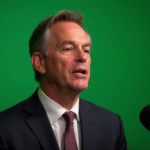Introduction
Mexico’s private healthcare landscape is a complex puzzle, with rising and overflowing costs, lack of transparency, and an insurance model struggling to adapt, challenging everyone involved. In a conversation with Salvador Arceo, General Director of Plan Seguro, we explore the challenges and opportunities to transform the system. With 27 years of leadership in the health insurance market – holding 87% of individual policy participation and serving 150,000 clients – Plan Seguro champions prevention and new collaboration models that could make healthcare more accessible and sustainable.
Plan Seguro’s Background and Market Position
Salvador Arceo, whose company saw a 14% growth in individual premiums in 2024 and paid out 2,124 million pesos in claims (8 million daily), explains that the insurance sector faces a structural dilemma. Insurance relies on two variables: probability and cost. While the likelihood of falling ill is manageable, costs are a slippery slope. Medical inflation, doubling or tripling basic consumer price index (IPC) inflation, soars due to imported inputs and a chain of intermediaries that escalates each step, from gloves to prosthetics. “It’s like food: producers receive cents, but consumers pay dearly due to commissions,” Arceo compares.
Plan Seguro, with 3,200 million pesos in sales and a solvency ratio of 1.45%, operates with narrow profit margins of 3-5%. This reflects the pressure of a competitive market. A significant hurdle, Arceo explains, is the direct payment model, where insurers cover costs without questioning hospital bills. Designed to prevent policyholders from bearing the brunt, it has turned into a scheme where costs spiral out of control and become unsustainable for many after midlife. When hospitals know insurance coverage, expenses rise. Additionally, the absence of quality indicators – such as infection rates, readmissions, or mortality – and standardized costs exacerbate the problem. Hospitals have failed to standardize costs and generate relevant metrics, while insurers, lacking authority to audit medical protocols, rely on reported data. Regulatory authorities, focused on their role as service providers, have neglected their regulatory role in this dynamic, leaving a void that perpetuates opacity.
Challenges and Opportunities
The COVID-19 pandemic highlighted the fragility of the system, with claims reaching 25 million pesos and sectoral losses amounting to 18 trillion pesos. Insurers, unable to transfer the full impact to mutuality, face complaints about excessive premium hikes. Communication about rising costs has been inadequate. Initiatives like freezing premiums for adults over 60, though well-intentioned, may create imbalances: younger individuals burdened with costs might leave the system, increasing claim rates by concentrating high-risk policyholders.
Plan Seguro, regulated as a Specialized Health Insurance Institution (ISES), distinguishes itself through its preventive approach. Its plans – Óptimo Plus, Avanzado, Intermedio, Esencial, and Único Empresarial – cover consultations, check-ups, and major medical expenses, with annual premiums ranging from 4,000 to 80,000 pesos. In 2024, Plan Seguro attended to 45% of its policyholders with 11,922 medical orders, 19,506 ambulatory services (videoconsultations, dental, visual), and 15,984 call center contacts. Arceo’s mission is to protect through prevention and financial support, enabling coverage even for individuals with controlled diabetes or hypertension, regardless of age.
Proposed Solutions
Arceo proposes exploring policies with defined coverage limits, similar to life insurance, where clients choose a coverage cap (e.g., 150,000 pesos for surgery). This could incentivize hospitals to become more efficient and potentially reduce premiums by 30%. However, implementation faces obstacles: agents prioritizing unlimited policies for higher commissions and an industry reluctant to change independently due to market share concerns.
Key Questions and Answers
- What are the main challenges in Mexico’s private healthcare sector? The rising and overflowing costs, lack of transparency, and an insurance model struggling to adapt challenge everyone involved.
- How does Plan Seguro address these challenges? Plan Seguro champions prevention and new collaboration models, focusing on accessible and sustainable healthcare.
- What is the direct payment model issue? The direct payment model, while intended to prevent policyholders from bearing the brunt of hospital bills, has led to uncontrolled cost escalation.
- How does Plan Seguro differentiate itself from competitors? As a Specialized Health Insurance Institution (ISES), Plan Seguro distinguishes itself through its preventive approach and wide range of plans.
- What are Arceo’s proposed solutions to the sector’s challenges? Arceo suggests exploring policies with defined coverage limits, similar to life insurance, which could incentivize hospitals to become more efficient and potentially reduce premiums by 30%.






